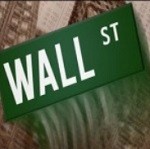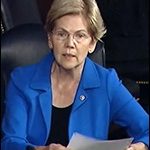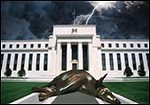-
Recent Posts
- Trump’s “Big Beautiful Bill” Is a Grotesque Giveaway to Fossil Fuel Billionaires While Adding $3.3 Trillion to Nation’s Debt
- Senator Chris Murphy Charges that Trump “Has Opened a Channel for Bribery”
- Congressman Casten: Trump’s Assault on the Rule of Law Is Causing Capital Flight Out of U.S. by Foreign Investors
- Trump’s Approval Rating Drops to 80-Year Low; IMF Says U.S. Tariffs Now Exceed the Highs During the Great Depression
- Nasdaq Has Lost More than 3,000 Points Since Trump’s First Full Day in Office in 2025; the Pain Has Barely Begun
- The Bond Crisis Last Week Was a Global No-Confidence Vote in U. S. President Donald Trump
- Trump’s Tariff Plan Guts $5 Trillion in Stock Value in Two Days; Senator Warren Calls for Emergency Action Before Markets Open on Monday
- Trump’s Attacks on Big Law, Universities, and the Media Have a Common Goal: Silence Dissent Against Authoritarian Rule
- Trump Administration Gives All Clear to Laundering Money through Shell Companies and Bribing Foreign Officials
- Four Megabanks on Wall Street Hold $3.2 Trillion in Uninsured Deposits – Which May Explain Senator Schumer’s Pivot to the GOP to Stop a Government Shutdown
- Here’s What Came Crashing Down Yesterday for Trump’s “Genius” Guy, Elon Musk: Tesla Stock, Access to Twitter (X), His Years of Secret Calls with Putin
- After Banning the Associated Press, Trump Is Now Targeting Specific Journalists That He Wants to See Fired
- Closely Watched Atlanta Fed Model Predicts Negative U.S. Growth in First Quarter
- Trump’s Gangster Diplomacy Makes Front Page Headlines Around the Globe
- Who Benefits Alongside Elon Musk If He Succeeds in Killing the CFPB: the Megabanks on Wall Street that Underwrite His Tesla Stock Offerings
- In Trump 1.0, the State Department Used Taxpayer Money to Publish a Book Elevating Elon Musk to a Superhero; It Was Funded by USAID, the Agency Musk Wants to Quickly Shut Down
- News Host Joy Reid Raises Threat of Trump Selling U.S. to Putin; Ten Days Later Her Show Is Cancelled
- Elon Musk’s DOGE Appears to Be Violating a Court Order; It Has Taken Down Hundreds of YouTube Videos that Educate Americans on How to Avoid Being Swindled
- Barron’s Releases Audio of Jamie Dimon Cursing Out His Workers at a Town Hall, as Dimon Plans to Dump Another One Million JPM Shares
- There’s One Federal Investigative Agency that Neither Trump nor Elon Musk Can Touch: It Just Opened an Investigation into DOGE
- Elon Musk’s Companies Were Under Investigation by Five Inspectors General When the Trump Administration Fired Them and Made Musk the Investigator
- Donald Trump Gives the Greenlight to Goldman Sachs and JPMorgan Chase to Return to Bribing Foreign Officials
- After Tech Geeks Built a Back Door to Loot Billions from FTX, Republicans Refuse to Investigate What Elon Musk’s Tech-Squad Did Inside the U.S. Treasury’s Payment System
- Former Prosecutor, Now U.S. Senator, Informs Tesla That CEO Musk May Be Violating Federal Law and to “Preserve All Records”
- Trump’s Hedge Fund Guy Is Now Overseeing the U.S. Treasury, IRS, OCC, U.S. Mint, FinCEN, F-SOC, and the Consumer Financial Protection Bureau
- As Elon Musk Begins Shutting Down Payments to Federal Contractors, a Strange Money Trail Emerges to His Operatives Inside the U.S. Treasury’s Payment System
- JPMorgan Chase Charged by Yet Another Internal Whistleblower with Cooking the Books
- We Asked Google’s AI Search Model, Gemini, Questions About the Fed and Wall Street Megabanks: It Got the Answers Dead Wrong
- With Trump and Melania’s Crypto Coins Likely to Raise Legal Challenges, Why Didn’t Trump Fire the SEC’s Inspector General in His Purge of IGs?
- Fossil Fuel Industry Could End Up Paying Tens of Billions for LA Wildfires and Deceiving the Public on Climate Change for Decades
- It’s Being Called the Biggest Grift by a President in U.S. History: Trump and First Lady Launch their Own Crypto Coins
- Trump Plans to Install a Fracking CEO to Head the Energy Department and Declare a National Emergency on Energy to Gain Vast Powers
- Fossil Fuel Money Played a Role in the Los Angeles Fires and the Push to Install Pete Hegseth as Secretary of Defense
- When It Comes to Wealth Retention in Retirement, Concrete May Be the New Gold
- Wall Street Watchdog Warns “Clock Is Ticking on a Coming Catastrophic Financial Crash”
- Wall Street Is Sending the Same Message to Americans on Fossil Fuel Financing that It Sent on Cigarettes: Drop Dead
- In a Six-Week Span, this Dark Pool with a Curious Past Traded 3.7 Billion Shares
- Wall Street’s Lobby Firm Hired Eugene Scalia of Gibson Dunn to Sue the Fed for Jamie Dimon
- Postmaster General Louis DeJoy Made $561,051 in Compensation in 2024, as Mail Costs Spiked and Delivery Deteriorated
- Fed Chair Jay Powell Sends a Bold Message to Trump and Tanks the Dow by 1123 Points
- The Head of Fixed Income at T. Rowe Price Makes the Scary Case for the 10-Year Treasury to Spike to 6 Percent
- $663 Billion in Cash Assets Have Gone Poof at the Largest U.S. Banks
- Donald Trump to Ring Bell at New York Stock Exchange Today as Hit List Posters Appear in Manhattan Targeting Wall Street CEOs
- Trump Has a Slush Fund to Prop Up the Dollar – Will He Use It to Prop Up Bitcoin Instead?
- A CEO Assassination; a Billionaire Heiress/NYPD Commissioner; a Secret Wall Street Spy Center – Here’s How They’re Connected
- Despite More than 1600 Tech Scientists Signing a Letter Calling Crypto a Sham, Trump Names a Crypto Cheerleader for SEC Chair
- The Fed Rings a Warning Bell: Hedge Funds and Life Insurers Are Reporting Historic Leverage
- Trump’s Nominee for FBI Director, Kash Patel, Has Businesses Financially Intertwined with Trump
- Donald Trump Is at Risk of Getting Named in a Fossil Fuels Conspiracy Lawsuit
- Trump Is Having Difficulty Getting a Lawyer to Accept the Nomination for SEC Chair: Here’s Why
Search Results for: Federal Reserve
The Stock Exchange of the Future Has Arrived – With a Very Dark Past

By Pam Martens and Russ Martens: July 12, 2022 ~ On May 4, 2020, while Jay Clayton was the Chairman of the Securities and Exchange Commission in the Trump administration, the SEC granted approval for a new national stock exchange called MEMX, whose Wall Street megabank owners have admitted to a collective nine criminal felony counts brought by the U.S. Department of Justice. JPMorgan Chase accounts for five of those felony counts; Goldman Sachs and a subsidiary account for two felony counts; Citigroup and UBS account for one felony count each. The other owners of MEMX include: Bank of America, BlackRock, Charles Schwab, Citadel Securities, E*TRADE, Fidelity Investments, Flow Traders, Jane Street, Manikay Partners, Morgan Stanley, TD Ameritrade, Virtu Financial, Wells Fargo, and Williams Trading. The SEC’s letter approving MEMX as a national securities exchange stated that the SEC was confident that MEMX would “prevent fraudulent and manipulative acts and practices, … Continue reading
Report: JPMorgan Chase and Citibank Hold 90 Percent of All Gold and Other Precious Metals Derivatives Held by All U.S. Banks

By Pam Martens and Russ Martens: June 29, 2022 ~ Last Tuesday, the Office of the Comptroller of the Currency (OCC) released its quarterly report on derivatives held at the megabanks on Wall Street. As we browsed through the standard graphs that are included in the quarterly report, one graph jumped out at us. It showed a measured growth in precious metals derivatives at insured U.S. commercial banks and savings associations over the past two decades and then an explosion in growth between the last quarter of 2021 and the end of the first quarter of this year. In just one quarter, precious metals derivatives had soared from $79.28 billion to $491.87 billion. That’s a 520 percent increase in a span of three months. (See Figure 18 at this link. The last ten years of the graph is shown above.) Having studied these quarterly reports since the 2008 financial crash, we … Continue reading
Is the Crypto Threat to U.S. Financial Stability $889 Billion or $10 Trillion?

By Pam Martens and Russ Martens: June 23, 2022 ~ Yesterday, Benzinga reported on a curious statement made by Fed Chair Jerome Powell during his appearance before the Senate Banking Committee on Wednesday. Powell was asked by Senator Kyrsten Sinema (D-AZ) if the Fed had been tracking the events in the crypto markets in the past several weeks. Powell responded that the Fed was watching those events “very carefully” but the Fed “did not see significant macro-economic implications.” The article goes on to lend credence to this observation from the Fed by noting the following: “It is important to note the entire cryptocurrency market cap is $889.25 billion versus the American GDP, which is $25.34 trillion, and an equities market that controls more than $49 trillion.” Before we drill down into the weeds of that crypto market cap figure, it’s important to note that former Fed Chair Alan Greenspan told Congress that he saw no major … Continue reading
These Charts Show the Wealth Devastation to U.S. Investors from Wall Street’s Unchecked Corrupt Practices

By Pam Martens and Russ Martens: June 8, 2022 ~ According to the Federal Reserve’s Z.1 Statistical Releases, as of December 31, 1996 the market value of stocks (“corporate equities”) held by U.S. households and U.S. nonprofits stood at $10.255 trillion. As the dot.com bubble mushroomed, by December 31, 1999 that figure stood at $19.58 trillion. By the time all of the fraudulent research that went into listing and promoting stocks came to light, household and nonprofit wealth had shrunk by $8.6 trillion. From the end of Q4 1999 to the end of Q3 2002, the market value of household and nonprofit holdings went from $19.5812 trillion to $10.9601trillion. (See chart below.) Wall Street makes big bucks from underwriting new issues of stocks (Initial Public Offerings or IPOs) and so do the Big Law firms that serve as the underwriters’ counsel. It doesn’t matter if these companies have zero business operations … Continue reading
Fed Data Shows a Half Century of Moderate Growth in the Fed’s Balance Sheet through Two World Wars – Then a Seismic Explosion Under Bernanke, Yellen and Powell

By Pam Martens and Russ Martens: June 6, 2022 ~ Last month the Federal Reserve Bank of New York released its 2021 annual report from its “Markets Group.” That’s the group that operates a trading floor (complete with speed dials to the trading houses on Wall Street) at the New York Fed, located not far from the New York Stock Exchange, as well as another trading floor on the premises of the Chicago Fed, which is not far from the futures exchanges in Chicago. That report showed that despite all of the recent talk about the Fed dramatically shrinking its balance sheet from its current size of $8.9 trillion, the internal Federal Reserve plan for the balance sheet is actually this: “After declining by about $2.5 trillion from the peak size reached in the first half of 2022, the portfolio stops declining in mid-2025, at which point it is held constant … Continue reading
Senator Sherrod Brown Goes After 0-Count Felon Wells Fargo; Ignores 5-Count Felon JPMorgan Chase

By Pam Martens and Russ Martens: June 1, 2022 ~ Wall Street On Parade was previously a big fan of Senator Sherrod Brown, the Chair of the Senate Banking Committee. Not so much anymore. Brown supported the nutty nomination of Saule Omarova to head the Office of the Comptroller of the Currency (OCC), the regulator of national banks, while attempting to spin the naysayers as part of a smear campaign. So far this year, the Senate Banking Committee has held hearings on tangential areas while ignoring the biggest threats to financial stability in the U.S.: the $200.18 trillion in notional derivatives (face amount) concentrated at just five Wall Street megabanks (JPMorgan Chase, Citigroup, Goldman Sachs, Morgan Stanley and Bank of America). There have been no subpoenas flying from the Senate Banking Committee as the Fed continues to cover up the largest trading scandal in its history and refusing to release to … Continue reading
Credit Unions and Banking Groups Warn of “Devastating Consequences” of a U.S Central Bank Digital Currency

By Pam Martens and Russ Martens: May 31, 2022 ~ Credit union and banking trade groups have released a joint letter to the chair and ranking member of the House Financial Services Committee, warning of “devastating consequences” if the Federal Reserve moves forward with a Central Bank Digital Currency (CBDC). The letter was sent on May 25, one day before the Committee convened a hearing on “Digital Assets and the Future of Finance: Examining the Benefits and Risks of a U.S. Central Bank Digital Currency.” That hearing took testimony from only one witness, Lael Brainard, the Vice Chair of the Federal Reserve. The fact that credit unions, which frequently serve unionized labor, joined with banking trade groups to sign off on the letter, lends credibility to the “devastating consequences” the letter enumerates of a Central Bank Digital Currency. A CBDC would allow the Federal Reserve to compete for deposits with credit … Continue reading
New York Fed Stuns with New Report: At Year End Its Trading Desk Owned 38 Percent of All 10-30 Year U.S. Treasuries

By Pam Martens and Russ Martens: May 26, 2022 ~ On Tuesday, the New York Fed’s trading desk released its annual report showing what it was up to in 2021. The New York Fed is the only one of the Federal Reserve’s 12 regional Fed banks to have a trading desk operation with speed dials to Wall Street’s trading houses, so we’re always interested in reading the “official” version of what’s been happening there. The report is a deeply sanitized version of the facts on the ground. (For example, there is nothing in the report to indicate that the New York Fed has established a second trading floor near the futures exchange in Chicago.) However, there is one paragraph in the newly-released report that took our breath away. It reveals that the New York Fed’s trading operation (officially called the System Open Market Account or SOMA) currently owns 38 percent of … Continue reading
Senator Elizabeth Warren Lauds the New York Stock Exchange for Investor Protections. It’s Currently Trading Multiple Alleged Frauds.

By Pam Martens and Russ Martens: May 20, 2022 ~ Yesterday the Senate Banking Committee held a hearing to consider President Biden’s nominations for two Commissioners at the Securities and Exchange Commission (Jaime E. Lizárraga and Mark Toshiro Uyeda) as well as Michael Barr to be Vice Chairman for Supervision at the Federal Reserve Board of Governors. (For the skinny on Barr’s fitness to supervise megabanks on Wall Street, see our hold-your-nose report here and David Dayen’s eyepopping report here.) During the hearing, Senator Elizabeth Warren noted the vast amounts of money that investors have lost in crypto coins and cryptocurrency and then moved on to compare the lack of protections that investors have in crypto versus the protections afforded in the stock market. Warren asked Barr the following: Warren: “If I bought a company’s stock, even the most hyped-up, junkiest one listed on the New York Stock Exchange, could I … Continue reading
Fed Chair Powell Says “Markets Are Orderly” and “Functioning.” They’re Not.

By Pam Martens and Russ Martens: May 19, 2022 ~ This past Tuesday, Federal Reserve Chair Jerome Powell sat for an interview with Wall Street Journal reporter Nick Timiraos as part of the newspaper’s “Future of Everything Festival.” During that interview, Powell told Timiraos that U.S. markets “are orderly, they’re functioning.” The precise exchange went as follows: (Watch it at 24:38 on YouTube video here.) Timiraos: “A Number of people have suggested to me the one thing that might slow you down or at least make this much more difficult would be some kind of market cataclysm. I wonder, in part, if that is why you are trying to be more transparent, not erratic, making sudden moves on your policy moves. My question there is, where’s your level of concern that financial stability and controlling inflation by raising interest rates, maybe a lot, might be fundamentally incompatible in that raising rates … Continue reading

